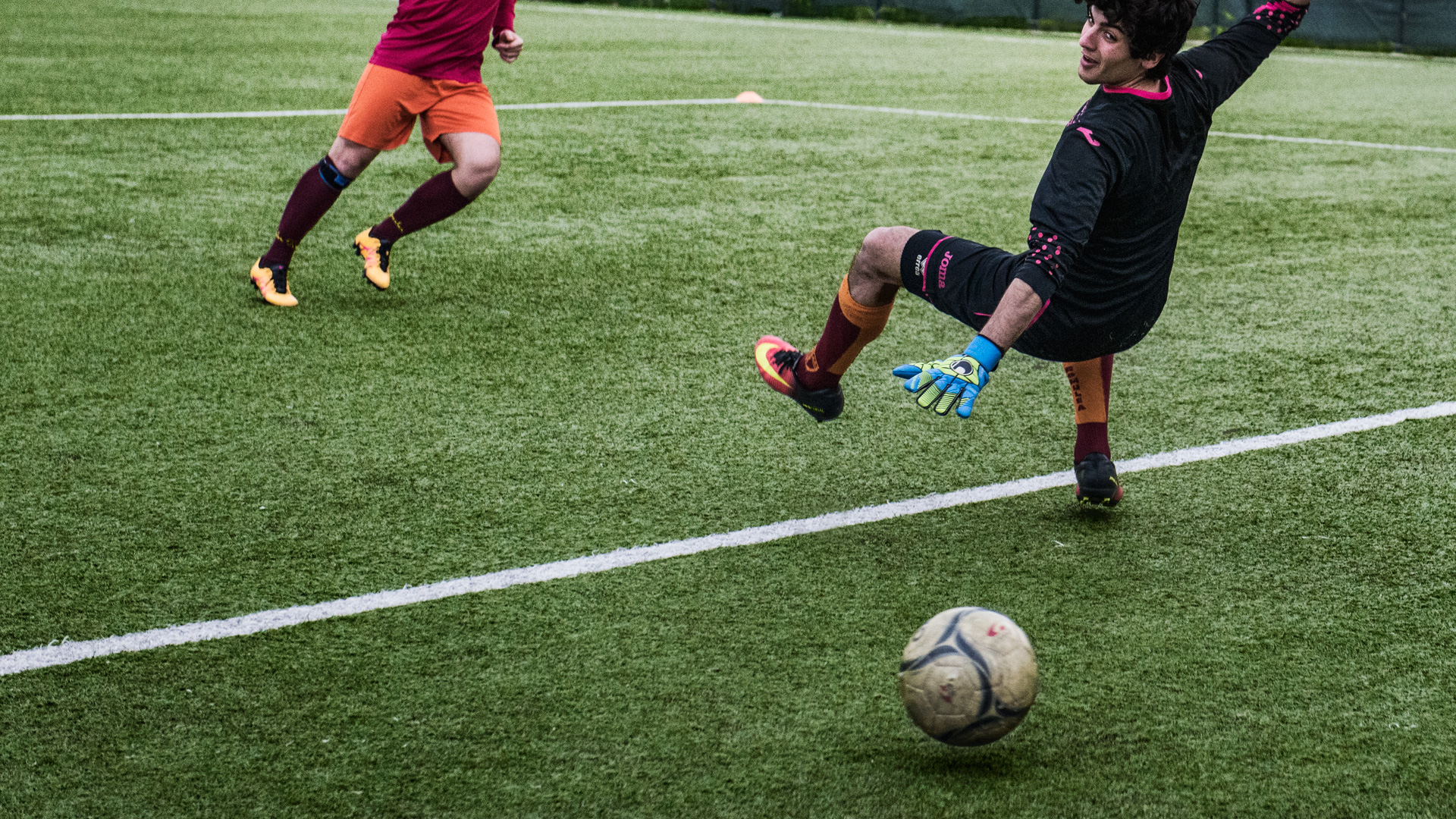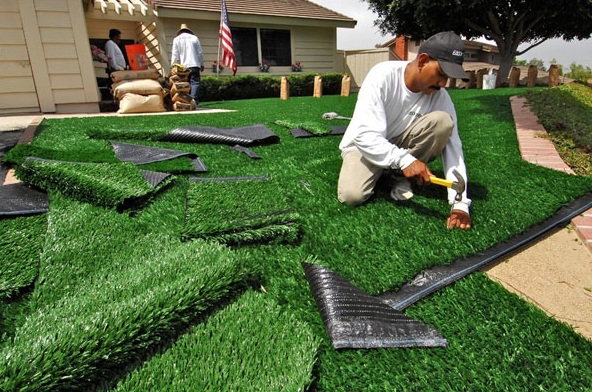Dependable Artificial Turf Companies Phoenix for a Attractive and Green Lawn
Wiki Article
Look Into the Environmental Conveniences of Opting for Artificial Turf Solutions
The adoption of fabricated turf solutions provides a compelling possibility to address pressing environmental obstacles. By substantially reducing water use and lessening the application of unsafe chemicals, these options not just advertise lasting landscape design but additionally safeguard local ecological communities. The lower carbon footprint connected with decreased upkeep activities adds to a much more sustainable approach to land monitoring. The effects of these advantages expand beyond mere conservation efforts, increasing inquiries concerning their lasting impact on environment conservation and overall ecological balance. Discovering these dimensions exposes a complex interplay worth considering.Water Conservation Benefits
One of the most considerable benefits of synthetic lawn is its ability to preserve water. In comparison, synthetic lawn does not require watering, considerably minimizing the overall demand for water sources.By getting rid of the demand for normal watering, synthetic grass adds to sustainable landscape practices and helps mitigate the ecological impact of excessive water consumption. The preservation of water prolongs to the decrease of drainage, which can lead to dirt disintegration and waterway air pollution.
Furthermore, the setup of synthetic grass allows house owners and towns to allot water sources much more successfully, focusing on crucial uses such as alcohol consumption water and agriculture. The shift towards synthetic grass not only advertises accountable water use but likewise lines up with broader environmental goals focused on preserving natural deposits.
As communities progressively focus on sustainability, the water conservation advantages of synthetic turf present an engaging case for its adoption in household and business landscape design tasks.
Lowered Chemical Use
The change to fabricated grass dramatically lowers the dependence on chemical therapies frequently used in natural lawn maintenance. Traditional turf management commonly involves the application of pesticides, plant foods, and herbicides to advertise development and control pests. These chemicals can posture threats to human wellness, neighborhood wildlife, and the setting, adding to dirt and water contamination.In contrast, synthetic turf eliminates the need for these hazardous materials. By reducing the launch of synthetic substances into the ecological community, fabricated lawn advertises much healthier soil and water systems.
Additionally, the absence of chemical drainage connected with fabricated lawn installations assists protect local waterways from pollution, supporting aquatic life and maintaining biodiversity. Artificial turf companies phoenix. As neighborhoods progressively prioritize lasting methods, selecting synthetic grass presents a viable option that aligns with environmental preservation objectives. Via this change, homeowner can take pleasure in lavish environment-friendly spaces without jeopardizing environmental wellness, paving the means for an extra sustainable future
Reduced Carbon Footprint

Furthermore, the installment of fabricated turf can result in considerable water conservation. Natural lawns need substantial quantities of water for irrigation, web which not just includes to the carbon impact related to water removal and treatment however likewise pressures local water resources. In comparison, man-made grass requires minimal upkeep, calling for no watering, thereby considerably minimizing water usage and its linked power costs.
Additionally, the long life of synthetic grass adds to its reduced carbon influence. With a life-span of as much as 15 years or more, the requirement for constant replacements is lessened, leading to less waste and lower power consumption in production and throwing away standard turf alternatives. In general, synthetic grass presents a sustainable alternative for eco conscious landscape design.
Habitat Conservation
Habitat preservation is an important factor to consider in the argument over landscape design choices, especially when comparing synthetic grass to natural grass. Natural turf yards often require extensive maintenance, consisting of making use of herbicides, fertilizers, and chemicals, which can detrimentally affect neighborhood ecological communities. These chemicals can leach right into the dirt and waterways, harming indigenous flora and fauna and interfering with neighborhood environments.
On the other hand, synthetic grass offers a chance to decrease the environmental impact of landscaping. By choosing for synthetic lawn, house owners can decrease the disruption of all-natural habitats connected with conventional lawn care practices. Synthetic grass gets rid of the demand for harmful chemicals, consequently safeguarding close-by wildlife and preserving the integrity of surrounding environments. Moreover, the installment of synthetic grass can bring about top article the conversion of previous grass locations into even more biodiverse landscapes, such as pollinator yards or native plant locations, which can support neighborhood wild animals.
Eventually, the change to synthetic grass not just conserves water and minimizes maintenance efforts but also cultivates an extra unified partnership in between human tasks and the all-natural environment, promoting environment conservation at the same time.
Long-Term Sustainability
Long-term sustainability is a crucial aspect in reviewing the advantages of synthetic grass over typical yard yards. One of the most substantial advantages of synthetic grass is its sturdiness; it can last approximately 15-20 years with minimal upkeep, whereas all-natural yard requires frequent reseeding and replacement. This longevity reduces the requirement for constant resources, such as water, fertilizers, and pesticides, which are vital for preserving a healthy and balanced grass lawn.Furthermore, synthetic grass contributes to a decrease in carbon discharges connected with lawn care tools. Typical lawns often call for gas-powered lawn mowers, leaners, Your Domain Name and blowers, all of which contribute to air pollution. Arizona artificial turf. On the other hand, man-made lawn eliminates the requirement for such equipment, advertising a cleaner atmosphere
Moreover, the manufacturing of synthetic grass progressively utilizes recycled materials, enhancing its sustainability profile. As suppliers take on green methods, the ecological impact of synthetic grass remains to reduce.

Conclusion
The adoption of man-made lawn options offers significant ecological benefits, including substantial water conservation, minimized dependence on damaging chemicals, and a reduced carbon impact. In addition, synthetic grass aids in maintaining all-natural habitats by reducing land disturbance and advertising long-term sustainability with using long lasting products. Jointly, these factors underscore the capacity of synthetic lawn to add favorably to environmental wellness and offer a viable option to traditional landscape design practices in an increasingly resource-conscious world.In contrast, man-made grass does not require watering, significantly reducing the general demand for water sources. By reducing the launch of artificial substances into the ecosystem, man-made grass advertises much healthier soil and water systems.
Furthermore, the setup of synthetic grass can result in substantial water preservation. In comparison, synthetic grass requires minimal upkeep, requiring no watering, thus significantly lowering water use and its connected power costs.

Report this wiki page